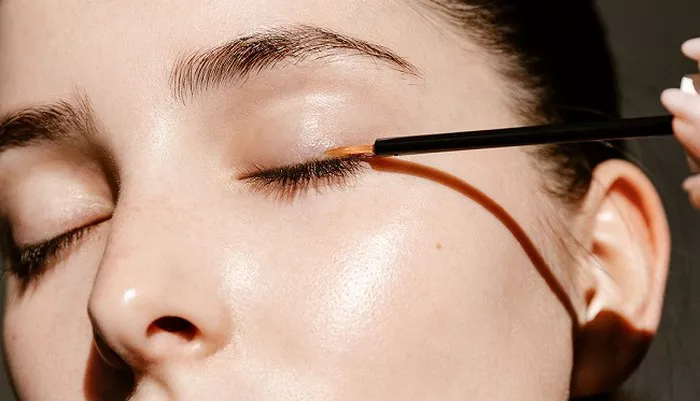Hair serums are popular hair care products designed to improve the look and health of your hair. They are lightweight, liquid-based treatments that target specific hair concerns like frizz, damage, or dryness. Unlike heavy oils or creams, serums coat the hair without weighing it down, making them a versatile addition to any hair care routine. In this article, we’ll explore what hair serums do, the different types available, and how to use them effectively for your hair type.
What Is Hair Serum?
Hair serum is a styling and treatment product that addresses common hair issues. It’s typically made with a blend of silicones, natural oils, vitamins, and proteins. These ingredients work together to smooth the hair’s surface, add shine, and protect against damage.
Serums are applied to damp or dry hair, focusing on the mid-lengths and ends, and are suitable for daily use. Think of them as a “shield” for your hair—they don’t penetrate deeply but create a protective layer on the outside.
Types of Hair Serums
Different serums are formulated for specific needs:
Frizz-Control Serums: Ideal for curly or wavy hair, these contain silicones (like dimethicone) to smooth the hair cuticle and lock out humidity.
Heat-Protectant Serums: Protect hair from blow-dryers, straighteners, or curling irons. They often include ingredients like cyclomethicone to withstand high temperatures.
Shine-Enhancing Serums: Add instant gloss to dull hair using light-reflecting oils (e.g., argan oil).
Repairing Serums: Target split ends and breakage with proteins (keratin) or amino acids to strengthen hair.
Growth-Stimulating Serums: Often applied to the scalp, these include caffeine or biotin to boost circulation and hair growth.
Key Ingredients in Hair Serums
Understanding ingredients helps you choose the right serum:
- Silicones (dimethicone, cyclomethicone): Smooth frizz and add shine by coating the hair.
- Natural Oils (argan, coconut, jojoba): Moisturize dry hair without greasiness.
- Proteins (keratin, collagen): Repair damage and strengthen weak strands.
- Vitamins (A, E, B5): Nourish the scalp and improve hair texture.
- UV Filters: Protect color-treated hair from sun damage.
Stylist Tip: Avoid sulfates in shampoos if you use silicone serums—they can strip away the protective layer.
Benefits of Using Hair Serum
- Smooths Frizz: Tames flyaways by sealing the hair cuticle.
- Adds Shine: Reflects light for a glossy finish.
- Protects from Heat: Shields hair up to 450°F (232°C).
- Reduces Breakage: Strengthens hair to prevent split ends.
- Locks in Moisture: Prevents dryness in humid or cold climates.
- Enhances Styling: Makes blow-drying faster and curls last longer.
How to Use Hair Serum
- Start with clean, towel-dried hair.
- Dispense a pea-sized amount (adjust for thick or long hair).
- Rub between palms and apply evenly from mid-lengths to ends.
- Style as usual. Avoid the scalp to prevent greasiness.
For dry hair: Use a tiny amount to refresh ends.
For heat tools: Apply serum before using straighteners.
Choosing the Right Serum for Your Hair Type
- Fine/Oily Hair: Lightweight, water-based serums (avoid heavy oils).
- Curly/Thick Hair: Rich, silicone-based serums to combat frizz.
- Dry/Damaged Hair: Look for repairing ingredients like keratin.
- Color-Treated Hair: UV-protective serums to prevent fading.
Common Mistakes to Avoid
- Overusing Serum: Too much causes buildup. Start with a small amount.
- Applying to Roots: Leads to flat, greasy hair. Focus on ends.
- Using the Wrong Type: Heavy serums on fine hair weigh it down.
Myths vs. Facts
- Myth: Serums repair split ends.
Fact: They temporarily smooth splits but can’t heal them. Trim regularly! - Myth: All serums are silicone-heavy.
Fact: Many brands now offer silicone-free options (e.g., flaxseed-based).
DIY vs. Store-Bought Serums
- DIY Serums: Use natural oils (e.g., almond + lavender oil). Affordable but less long-lasting.
- Commercial Serums: Offer advanced formulas with heat protection and longer-lasting effects.
Conclusion
Hair serums are a simple yet powerful tool for healthier, more manageable hair. By selecting the right type and applying it correctly, you can tackle frizz, boost shine, and protect your hair from daily damage. Remember: consistency is key! Incorporate a serum into your routine, and you’ll see results in just a few weeks.
Related topics:
Unlocking the Potential of Hair Serums: A Comprehensive Guide


